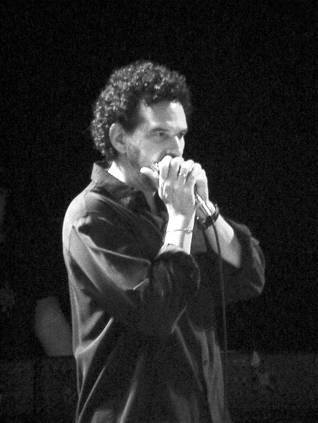 Here's something I recently picked up from Twitter, and I'm running it with all the Twit hashtags intact:
Here's something I recently picked up from Twitter, and I'm running it with all the Twit hashtags intact:digg_dugg (Douglas Whitworth): Am I really listening to a #ymsb song that has drums in it? #bluegrass fail #disappointed boys you're making monroe turn in his grave.
He's referring to Yonder Mountain String Band, a Colorado group that mixes its bluegrass with several other musical forms. This group makes no claims that they're the pure stuff.
I had to laugh at digg_dugg's tweet. I love bluegrass, and of all the genres around, it's the most fun to play. It's a high-energy music. Almost impossible to feel the weight of the world when you're playing or listening to bluegrass. And it's tougher than it looks. While there's nothing terribly complex about bluegrass, an instrumentalist really needs some good chops to play it well.
But bluegrass probably has more purists among its players than any other type of music. Certainly more so than jazz, than country, than blues, maybe even more so than classical. A great many bluegrass players prefer to stay true to its roots.
Here's how the bluegrass purist will explain it: Bill Monroe, who is considered the father of the genre, took old string-band and gospel music, stuck a rocket engine on it, and lit it with his mandolin. Most of his early bands used flat-picked guitar, a fiddle or two, an upright bass, maybe some banjo in the background, his mando, and some great vocal harmonies.
To this day, many bluegrass pickers consider themselves traditionalists, sticking with the Monroe playbook. What's funny is that, although Ralph Stanley was another bluegrass founding father, banjo wasn't really a front-and-center instrument until Earl Scruggs arrived on the scene.
There's also an accepted way to use amplification in bluegrass: One microphone. The vocalists gather around it when they sing, and when someone takes an instrumental solo he steps up to that mic. That's how it's done, and sometimes the instrumentalists will form a line behind the soloist to take a lead.
I'll admit there's a lot of that traditionalist in me. Some years ago I saw one bluegrass band use an electric bass guitar, and immediately shut my eyes. I didn't want to see it. I believe there's a commandment against using electric bass in bluegrass. Maybe it's in Leviticus.
So I can understand what the guy on Twitter means about seeing a bluegrass band using a drum kit. Yeah, that would be enough to bring Bill Monroe out of the grave to put a stop to it.
In string band music, the thump of the bass, the guitar work, and the mandolin "chop" on the two and four beats is generally all the timekeeping you need. It's plenty. Shoot, I don't even like to see someone playing spoons, probably because I've yet to hear one play them with any sense of rhythm.
I've been involved in several late-night debates about traditional bluegrass, mostly because I play harmonica -- which is not considered one of the "genuine article" instruments. But sonically, harmonica is similar to fiddle in that you can do your double stops and sustain your tones, and the two instruments are in about the same tonal range. So most of the time I'd play fiddle lines in a bluegrass setting.
Some years ago bluegrass picker/advocate "Dr. Banjo" (Pete Wernick) created a stir in the harmonica community when he said that harp was OK for bluegrass ballads, but just doesn't sound good on your fast songs. Of course it can, and it does, but the trick -- again -- is to play fiddle runs. One of the best practitioners of this is Cara Cooke, a harmonica player in Austin, Texas. I learned a great deal by listening to her ideas on her Web site, then sitting down to listen to all the bluegrass fiddle players I could find.
For a couple of years, I worked in a bluegrass band with Lane Gregory on guitar, Wil St. John on mandolin, and Jamie McDonnell on washtub bass. "It's an original bluegrass instrument," Jamie would say of his bass. Wrong. Monroe's bands used an upright bass for those low tones. But Jamie's instrument was used for a lot of string-band stuff, which predates bluegrass, so I'll give him his props there. But then, our links to the traditionalists got blown out the window because we amplified our instruments. That's just not done.
A lot of bluegrass folks were wondering what Bela Fleck was thinking when he put together his first Flecktones band: Bela on banjo, Victor Wooten on electric (!) bass, Howard Levy on (!) harmonica, and Future Man on (!!!) synth-drumitar. Yeah, a fingertip-controlled drum machine shoved into the body of an electric guitar. An unbelievable sound, but it sure wasn't pure bluegrass. Bela never claimed that it was; it was as much jazz as it was bluegrass.
Gordon Small, a banjo picker/bassist I used to play with, was probably the biggest bluegrass purist I've ever met. He was quick to tell me what was and what wasn't bluegrass, though he liked what I was doing. But Gordon told me about seeing Bela Fleck play a few traditional bluegrass songs live, on solo banjo. He said it was straight out of the church of Monroe and Stanley.
###
(Photo: Bill Monroe set the standard that still lives on.)

